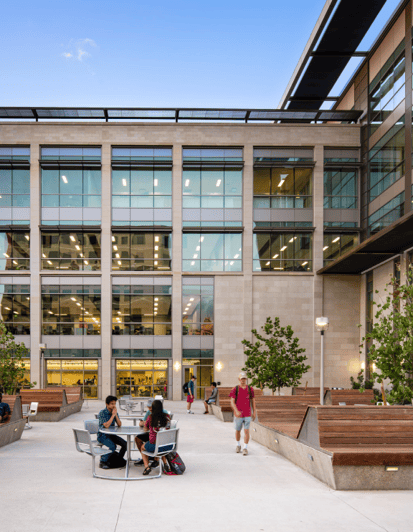Today, the need has never been greater to create new outdoor spaces on higher education campuses that bring learning outside, offer an inspiring sense of place, and reflect the unique identities of their institutions. To explore this topic in greater depth, Landscape Forms brought together a panel of industry experts for a live webinar discussion of the importance of connecting people with nature in built environments.
Continue reading to learn about the importance of utilizing outdoor spaces on college campuses, and the possibilities offered by Landscape Forms to participating agencies of OMNIA Partners!
%20(6).png?width=1312&height=312&name=2024.04%20%20Landscape%20Forms%20%20Blog%20%20Quote%20Image%20(1050%20x%20450%20px)%20(6).png)
